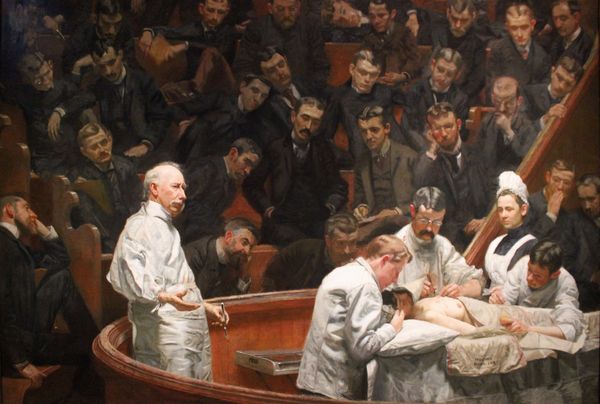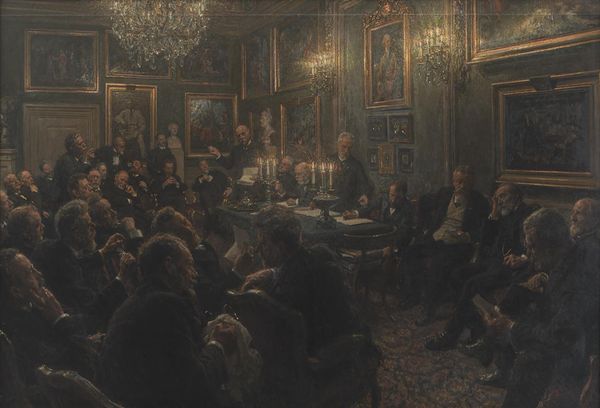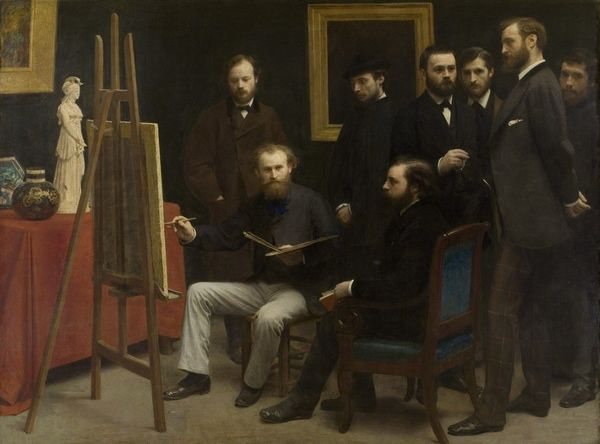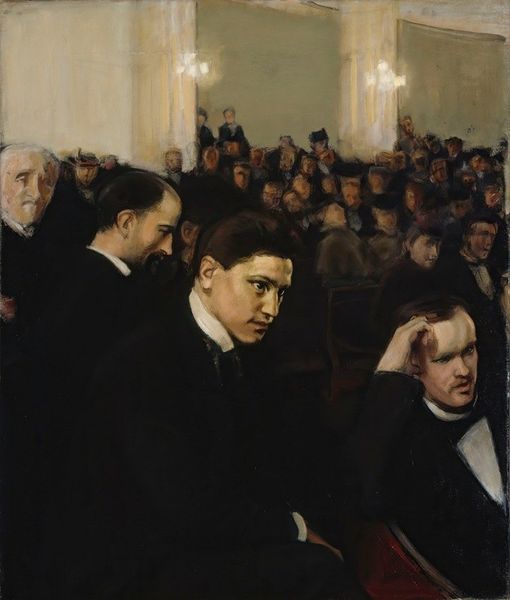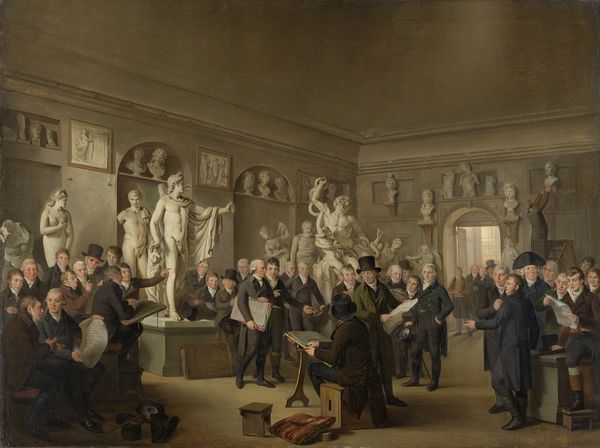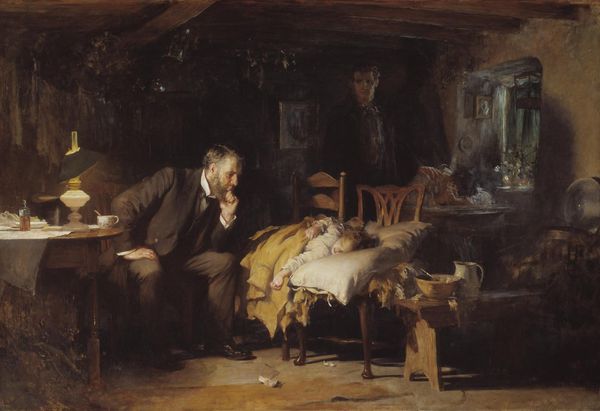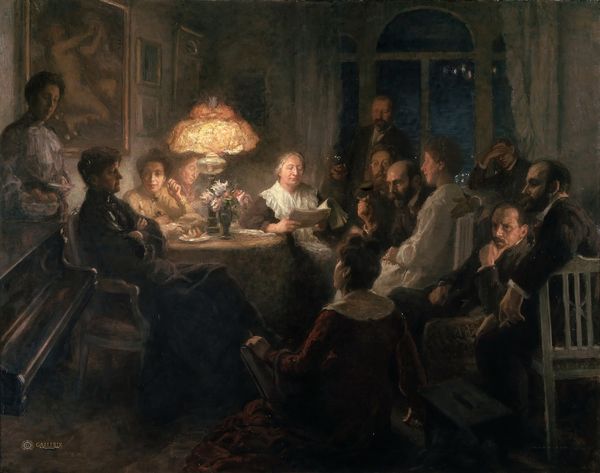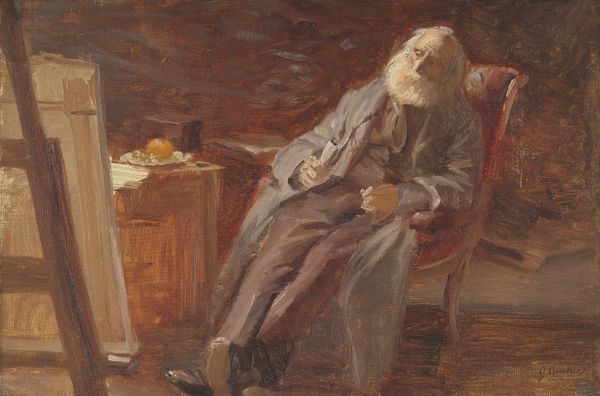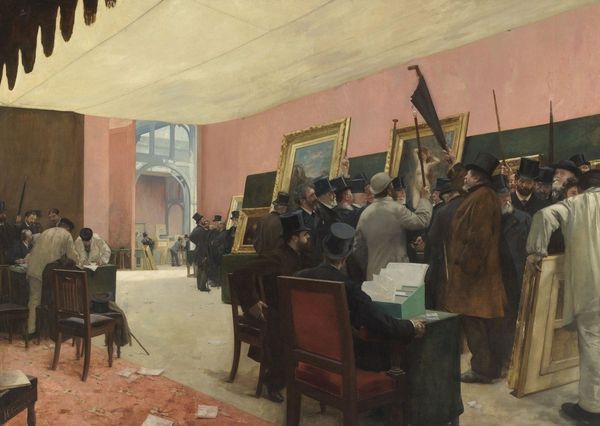
painting, oil-paint
#
portrait
#
painting
#
oil-paint
#
group-portraits
#
history-painting
#
academic-art
#
realism
Dimensions: 198.12 x 243.84 cm
Copyright: Public domain
Curator: Here we have Thomas Eakins's "The Gross Clinic" from 1875, a monumental oil painting currently residing at the Philadelphia Museum of Art. Editor: Wow, it's...intense. The darkness and that single point of bright, almost blinding light on the surgical site. It feels like stepping into a nightmare, a hyper-realistic one at that. Curator: Precisely. Eakins utilizes a stark realism, reminiscent of Rembrandt's use of light and shadow, or chiaroscuro, to direct the viewer's gaze. Observe the almost photographic detail, reflective of Eakins's own interest in photography. This unflinching depiction situates the work firmly within the tenets of Realism, as well as the style known as academic art. Editor: The staging is just superb, even though there are elements in it that sicken me! You have Dr. Gross holding what I can only assume is blood on his fingers and an amphitheater of onlookers. Are those students? Why are they looking with such glee? What does this portrait of medical advancement aim to express? It is an uneasy image to linger on. Curator: Those are indeed medical students observing a surgery, a public demonstration by Dr. Samuel Gross, a renowned surgeon of the time. Its display caused considerable controversy at the time due to its graphic nature. One may say the redness symbolizes blood and the cost of life or, on another account, alludes to transformation through the process. This painting not only represents Gross as a figure of authority and a medical genius but also depicts an important aspect of medical education and practice during the era. The scalpel in Dr. Gross’s hand signifies precision. Editor: Right. This is Eakins portraying science, using the portrait format to highlight what amounts to be the triumph of clinical reason, but I cannot overlook that it feels unsettling, a meditation on knowledge through what most of us might still see as human desecration. The painting challenges conventional artistic subjects. Curator: Absolutely. "The Gross Clinic" occupies an important place in the trajectory of both art and medical history and should be remembered and treasured, or not, based on an individual's feelings toward science or lack of, I would guess. Editor: In either way, in a positive and negative way it makes us reflect on mortality, and man's attempt to tame nature itself, right? I'll think of it whenever I hear the word scalpel.
Comments
No comments
Be the first to comment and join the conversation on the ultimate creative platform.
